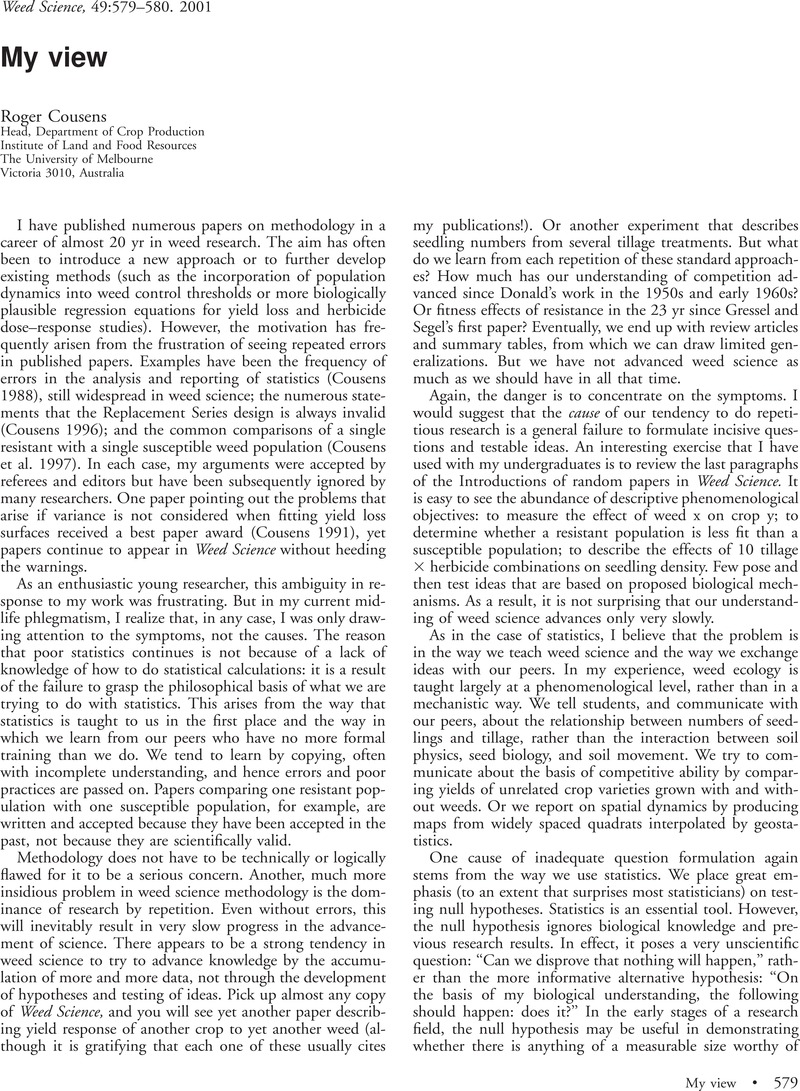Crossref Citations
This article has been cited by the following publications. This list is generated based on data provided by Crossref.
Damgaard, Christian
Borksted, Berit
and
Kjær, Christian
2005.
Herbivory and plant community dynamics: Competitive interactions between an insect-resistant and an insect-susceptibleArabidopsis thalianagenotype.
Journal of Plant Interactions,
Vol. 1,
Issue. 2,
p.
83.
Damgaard, Christian
Mathiassen, Solvejg Kopp
and
Kudsk, Per
2008.
Modeling effects of herbicide drift on the competitive interactions between weeds.
Environmental Toxicology and Chemistry,
Vol. 27,
Issue. 6,
p.
1302.
Cousens, Roger D.
Hill, Julian
French, Kris
and
Bishop, Ian D.
2010.
Towards better prediction of seed dispersal by animals.
Functional Ecology,
Vol. 24,
Issue. 6,
p.
1163.



